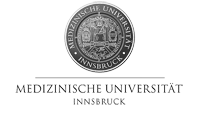|
|
 |
1 Dept. of Genetics, Cell- and Immunobiology, Semmelweis University, Budapest, Hungary;
2 2nd Dept. of Pediatrics, Semmelweis University, Budapest, Hungary;
3 Laborigo Molecular Diagnostics Ltd, Budapest, Hungary;
4 Dept. of Molecular Genetics, National Medical Center, Budapest, Hungary
5 Dept. of Pediatrics, University of Debrecen, Debrecen, Hungary;
6 1st Dept. of Pediatrics, Semmelweis University, Budapest, Hungary;
7 Heim Pál Children Hospital, Budapest, Hungary
ABCB1 (MDR1) 3435C>T, 2677G>T,A, 1236C>T and ABCG2 (BCRP) 421C>A, 34G>A germline polymorphisms have been reported to alter gene expression and the prognosis of acute leukemia. These transporters are present at the intestinal epithelium, renal tubules, hepatocytes, structures of the blood-brain-barrier and also in the cell membrane of haematopoetic stem cells. Our objective was to examine the association of these polymorphisms with the occurrence of adverse effects during the intravenous chemotherapy phase of the ALL-BFM 90 and 95 protocols. In this retrospective study, analyses were performed on data from 266 pediatric acute lymphoblastic leukemia patients. In our study, the 3435T allele showed a recessive trait characterized by increased therapeutic complications. Regarding the whole intravenous chemotherapy phase, patients of 3435TT genotype had 8.2 (CI 95% 1.5-14.9; p=0.2) days more therapy delays compared to the combined group of 3435CC+CT patients. Toxic encephalopathy was more frequent among 3435TT children (OR 3.1, 95%CI: 1.2-7.9; p=0.02) than in the 3435CC+CT group. A higher proportion of 3435TT patients suffered excessive infectious complications (OR=3.3, 95%CI: 1.3-8.2; p=0.01). 3435TT patients were also more prone to develop grade III/IV leukocytopenia during the reinduction phase of therapy (OR=3.7, 95%CI: 1.3-10.8; p=0.02). Similar but weaker associations were calculated using the ABCB1 haplotypes defined by three SNPs. Toxicities described above did not differ in ABCG2 genotype groups. Regarding other adverse effects of therapy, diabetes mellitus, peripheric neuropathy and acute pancreatitis were not related to any polymorphisms, either (p>0.05). In conclusion, our data suggest that the ABCB1 3435C>T genotype is predictive for the occurrence and severity of neurotoxic and immunosuppressive side-effects during the applied chemotherapy regimen.
